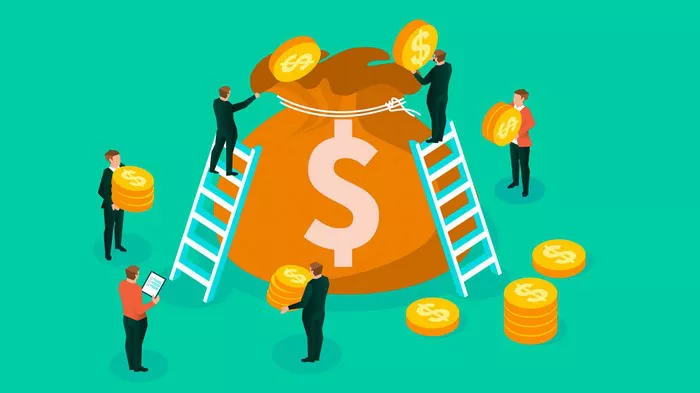In the world of global finance, the movement of capital knows no borders. Investors constantly seek out opportunities that offer the highest returns for their capital while managing risks. One significant factor that influences foreign investment flows is the prevailing interest rates in a country. High interest rates can act as a magnet, drawing foreign investors seeking greater returns and opportunities for profit. In this article, we’ll explore why high interest rates have this effect and their implications for attracting foreign investment.
The allure of high interest rates
1. Interest rates and investment returns
Interest rates play a pivotal role in determining the returns on investments denominated in a particular currency. When a country’s central bank raises interest rates, it makes investments in that currency more attractive relative to others with lower interest rates. This attractiveness stems from the potential for higher yields and returns on investment.
Foreign investors, especially those from countries with lower interest rates, are enticed to invest in assets denominated in the currency with higher interest rates. This investment strategy allows them to earn a higher return on their investment compared to what they could achieve domestically.
2. Yield differentials and carry trade
The concept of yield differentials drives a strategy known as the carry trade. In a carry trade, investors borrow funds in a currency with low-interest rates and invest them in a currency offering higher interest rates. The goal is to profit from the interest rate differential or “carry” between the two currencies.
For example, if Country A has an interest rate of 5% while Country B has an interest rate of 2%, investors may borrow in Country B’s currency and invest in assets denominated in Country A’s currency. They earn the interest rate differential as profit. Consequently, high-interest rates in a country can attract foreign investors engaging in carry trades, boosting foreign investment flows.
3. Economic growth prospects
High-interest rates can signal strong economic fundamentals and growth prospects in a country. Central banks typically raise interest rates to combat inflation or to prevent overheating of the economy. In such cases, foreign investors view the higher interest rates as reflective of a stable economic environment conducive to investment.
Investors are more likely to allocate capital to countries with strong economic growth prospects as they anticipate higher returns on their investments. Thus, high-interest rates not only attract investors seeking immediate yield but also those looking to capitalize on long-term economic growth.
Implications for attracting foreign investment
1. Currency appreciation
One of the primary consequences of high interest rates attracting foreign investment is currency appreciation. As foreign investors purchase assets denominated in the local currency to benefit from higher interest rates, the demand for that currency increases. This increased demand drives up the value of the currency relative to others in the foreign exchange market.
While currency appreciation can enhance the purchasing power of consumers and businesses importing goods and services, it may also pose challenges for exporters by making their products relatively more expensive in foreign markets.
2. Capital inflows and economic stimulus
Foreign investment driven by high-interest rates can inject much-needed capital into a country’s economy. This influx of capital can finance domestic projects, stimulate economic growth, and create employment opportunities. Additionally, foreign direct investment (FDI) resulting from high-interest rates may bring in expertise, technology, and managerial skills, further contributing to economic development.
However, policymakers must ensure that the influx of capital does not lead to asset bubbles or excessive speculation, which could destabilize the economy in the long run.
3. Policy trade-offs
While high-interest rates can attract foreign investment, policymakers face trade-offs in managing interest rates to balance domestic economic objectives. Central banks must carefully consider the impact of interest rate hikes on domestic consumption, investment, and employment. Additionally, higher interest rates may increase borrowing costs for domestic businesses and consumers, potentially dampening domestic demand.
Moreover, policymakers must be mindful of the potential for capital flight if interest rate differentials narrow or if investors perceive increased risks in the country. Sudden outflows of foreign capital could put pressure on the domestic currency and financial markets, necessitating swift policy responses to maintain stability.
Conclusion
High-interest rates have a powerful allure for foreign investors seeking greater returns and profit opportunities. The differential between interest rates in different countries drives capital flows, influencing exchange rates, economic growth, and policy decisions. While high-interest rates can attract foreign investment and stimulate economic activity, policymakers must navigate trade-offs and risks to ensure sustainable economic development.
FAQs
Q1: Why do high-interest rates attract foreign investment?
A1: High-interest rates offer the potential for greater returns on investment compared to countries with lower interest rates. Foreign investors are attracted to these opportunities, driving capital flows into the country with higher interest rates.
Q2: How do high-interest rates affect currency exchange rates?
A2: High-interest rates often lead to currency appreciation as foreign investors purchase assets denominated in the local currency to benefit from higher yields. This increased demand for the currency drives up its value relative to others in the foreign exchange market.
Q3: What are the potential risks associated with attracting foreign investment through high-interest rates?
A3: While high-interest rates can stimulate economic activity and attract foreign investment, policymakers must balance these benefits with potential risks such as asset bubbles, capital flight, and adverse effects on domestic consumption and investment.


